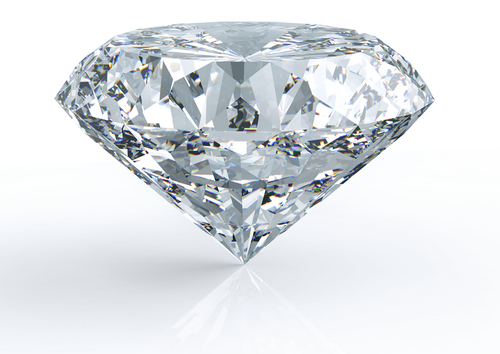Our diamond stores in Richardson and Plano, Texas are a testament to our belief in the four C’s of diamonds – cut, color, clarity, and carat. With the combination of the 4 C’s, diamond grading can be made precisely to your individual needs and desires. The American Gem Society has its own scoring system between 0 and 10, where 0 is ideal and 10 is poor. Before purchasing a diamond, it helps to understand these concepts with confidence to assure you get exactly what you want.
The cut of a diamond has the greatest effect of the diamond’s beauty. To determine the quality of the cut, our diamond grader evaluates the cutter’s skill in fashioning the diamond. The cut is the most important factor referring to the precise positioning, shape, and the angle of the diamond’s facets. The cut of the diamond is also directly proportional to its brilliance. The cut is a combination of the quantity of the diamond with the overall finish. Hence, the cut is craftsmanship.
The color of the diamond is correlated to the many hues, ranging from colorless to a light yellow or light brown tint of the diamond. The rarest of diamonds are colorless, whereas other natural colors like blue, red, and pink, are known as fancier diamonds because of their visual appearance. Other colors that are becoming common include:
- Cornucopia of Colors
- Occur naturally in every hue of the rainbow, colored diamonds’ hues are actually caused by impurities within the stone. The cost of natural colored diamonds is largely dependent on the color’s rarity, with red being the rarest of all. Fancy colored diamonds are classified by their shade and intensity and are typically set in a metal that will enhance their hue. Colors can be artificially created in a diamond, so they should be accompanied by a certificate from a respected grading lab.
- Sunny Yellows
- Tones range from intense to pale yellow, and the stones are typically set in yellow gold prongs, regardless of the overall metals used in the piece.
- Charmin Chocolates
- Known for their wide variety of colors and undertones, chocolate, cognac and champagne diamonds are ultra-hot this year. These earth-toned diamonds, available in an endless assortment of hues from deep to delicately pale, are perfect warm, neutral stones for accessorizing almost any outfit
- Poetic Pinks
- Natural pink diamonds range in tone from orangey pink to purplish pink and are prohibitively expensive due to their rarity.
- Bold Blacks
- Dramatic, gleaming black diamonds. Available designs include striking chandelier earrings, black-and-white diamond combination pieces, and dramatic black solitaires. Black and silver diamonds are at the lower end of the price scale for fancy colored diamonds, making them both stylish and affordable.
The clarity of a diamond is determined by internal characteristics known as blemishes. Diamonds without inclusions or blemishes are rare; however, most characteristics can only be seen with magnification. A stone is graded as flawless if, under 10-power magnification, no internal flaws (clouds, feathers, pinpoints) and no external imperfections (scratches, pits, nicks) are visible. Absolutely flawless diamonds are exceedingly rare and priced accordingly.
Lastly, the carat of the diamond is the diamond’s physical weight measured in metric carats. One carat equals 1/5 gram and is subdivided into 100 points. The carat denotes the weight of a diamond. The ideal engagement ring is clear. Diamonds may appear colorless, but minute impurities within each stone create subtle tints of color. Each stone is color-graded to a precise scale from “D” (colorless) to “Z” (saturated).
If you would like to come in to our Diamond Shop and learn more about diamonds, then contact us today.

